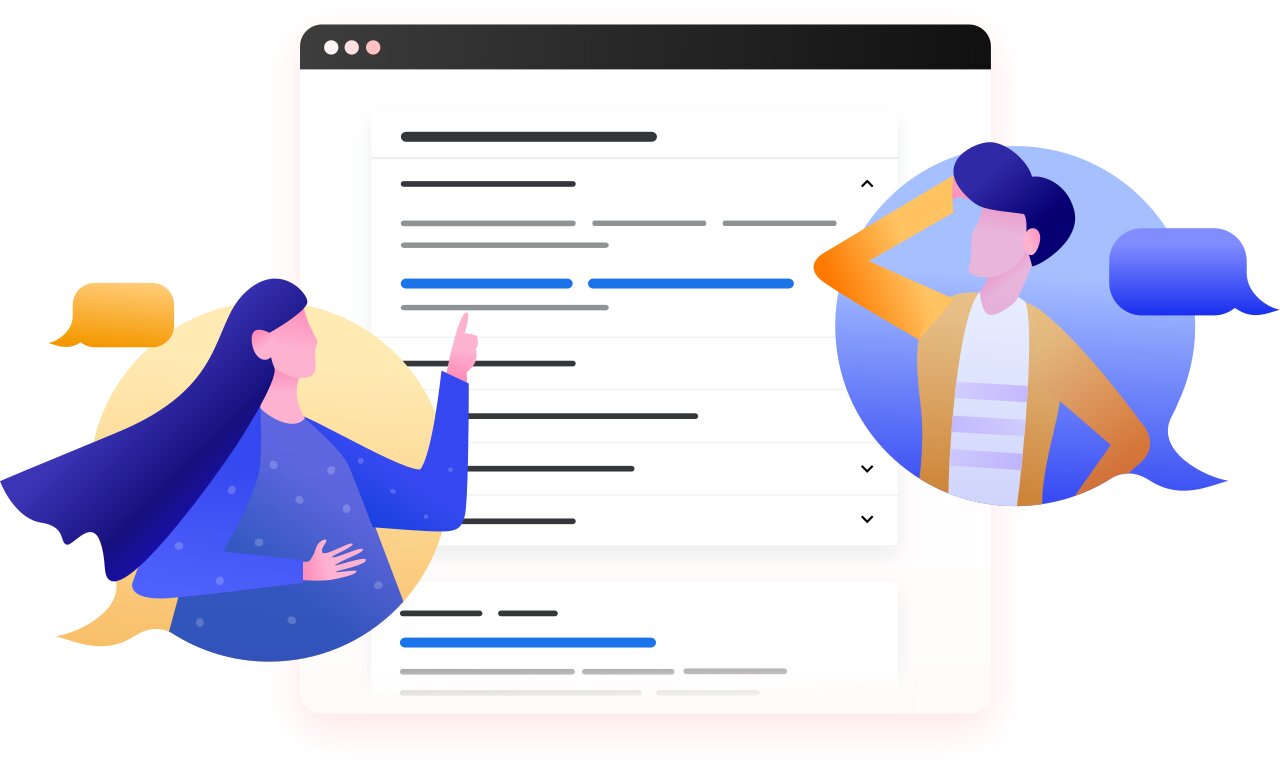
Google’s SERP elements may not be under our control, but here is how digital marketers can better position their clients’ organic visibility through “People also ask”.
“People also ask” boxes on Google’s search results are widely discussed within the search engine optimization community because they occupy plenty of SERP real estate while providing little or no organic visibility to publishers.
Nevertheless, Google’s “People also ask” listings will likely be helpful to users, as they will enable them to gain a deeper understanding of a subject. There is still a lingering question concerning whether they are actually sending clicks to publishers’ pages or not.
Table of Contents
For the past several years, “People Also Ask” (PAA) boxes have become more common and important. Based on Ahrefs’ Keywords Explorer statistics, 43% of search queries now have a PAA box. So, there’s no doubt about how PAA boxes are important to rank on Google SERP organically.
Suggested Read: Ultimate Modern SEO Strategy for 2022: Achieve Your Goals
It displays questions related to the user’s search query in a box next to the ‘People Also Ask’ (PAA) box. The answers are all pulled from web pages, and Google provides links to the sources underneath each.
The ‘People Also Ask’ boxes: Know What’s Up! First, let’s take a look at a few important factors to keep in mind before we discuss whether or not to pursue PAA rankings.
As digital marketers, we must look for ways to boost our clients’ organic visibility even with no control over Google’s search engine page elements. Is there any way that marketers can make better use of Google’s search function? Let’s find out.
It is one of the coolest things about the “People also ask” boxes that they are dynamic. Upon clicking one question, another set of questions appears underneath that will lead you in a new direction.
The more you choose, the more options are presented to you. In addition, depending on which question you select, the further questions will differ (in a topic, direction, or intent) and it’s making this feature cooler.
To clarify, let’s look at an example. Let’s search for something like – “Is wine good for your blood?”.
Well, there are many questions that have already appeared in the box. Let’s click on “What are the benefits of drinking red wine?” and see how many other questions will appear. Okay, now click on another different question “Is red wine good for your heart and blood pressure?”. See what I mean?
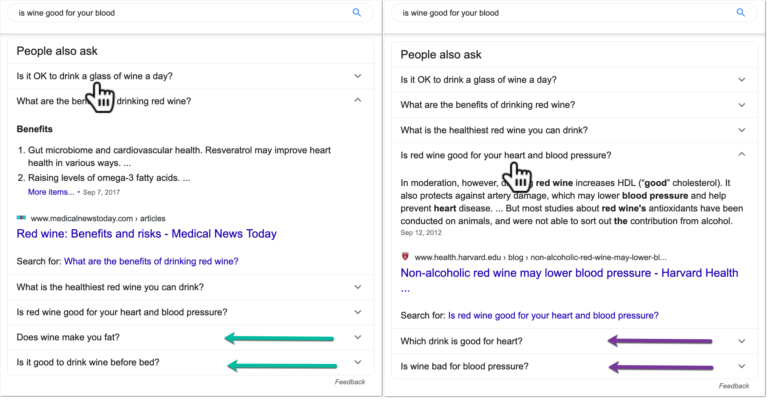
Well now, while some people may consider this exercise rather insignificant, I think it’s quite fascinating because it shows us what Google knows about their users’ research patterns and what they may be interested in further, depending on their further steps.
In order to provide you with some context, Google uses semantic analysis to determine which questions fit the needs of every searcher. The following is an overview of a patent by Bill Slawski entitled “Generating related questions for search queries,” which specifies the necessity of searching with the right intent:

To get a deeper insight into text optimizers to learn more about the different kinds of questions and types of intent that they may signal. Similar to Google, the tool will extract questions based on keywords and phrases. Following is an example of an intent-based question on bitcoin.
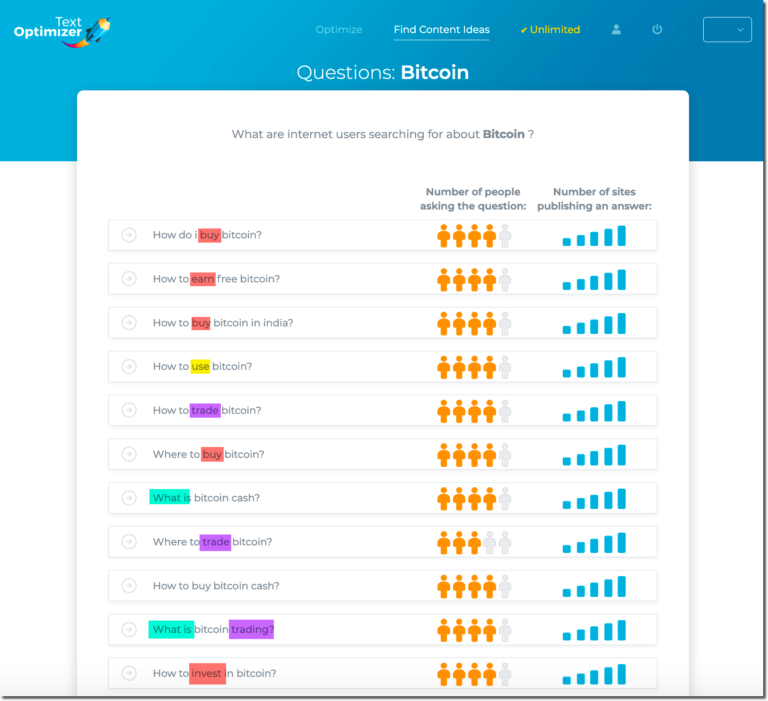
In some ways, this one is similar to the previous one, but it takes a more practical approach, beyond understanding your audience and topic better. Google’s search patterns will soon become apparent to you if you perform enough searches for your target query.
For instance, many of the “People also ask” boxes of city-related topics will ask about the city’s safety, its popularity as a place to live, and what it’s most famous for:

Knowing these patterns of searching is crucial if you want to:
These are the crucial aspects you’ve to keep in mind to utilize your People Also Ask boxes to rank on Google SERP organically.
Suggested Read: The Ultimate Recipe for SEO Success in 2022
When you have a clear understanding of your target users’ struggles, you can create a helpful FAQ section that can bring steady traffic to your site.
The only thing you have to do is collect all the relevant “People also ask” results, sort them into sections (based on your defined intent/search pattern), and answer all the questions on your dedicated FAQ page.
Be sure to keep these things in mind when creating the FAQ page:
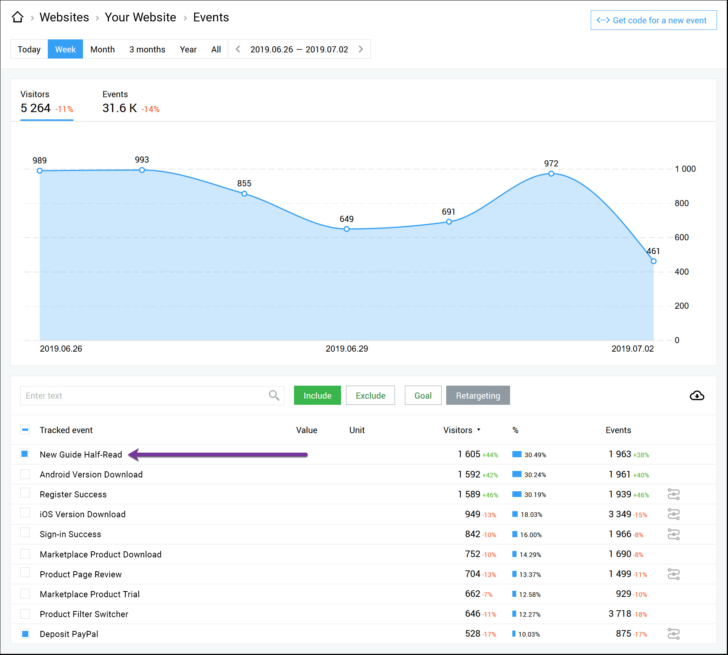
Suggested Read: Top 8 Keyword Research Tools in 2022: Effective SEO Strategy
You will learn a lot about what kinds of challenges your competitors’ customers face, by studying their branded queries and resulting “People also ask” results.
It might make sense to organize “People also ask” results based on search intent when it comes to branded “People also ask” results:
The ROPO answer: These customers research a product before making a purchase.
Customers with high intent: These are likely to buy. Prices are usually associated with these queries, like those containing the word “reviews”.
Navigating your competitor’s site: Your competitors’ site is confusing to your customers and they need some guidance. Using these queries while building your site can help you spot usability problems.
Customer questions about your competition: These customers want to know more about the company they’re dealing with.
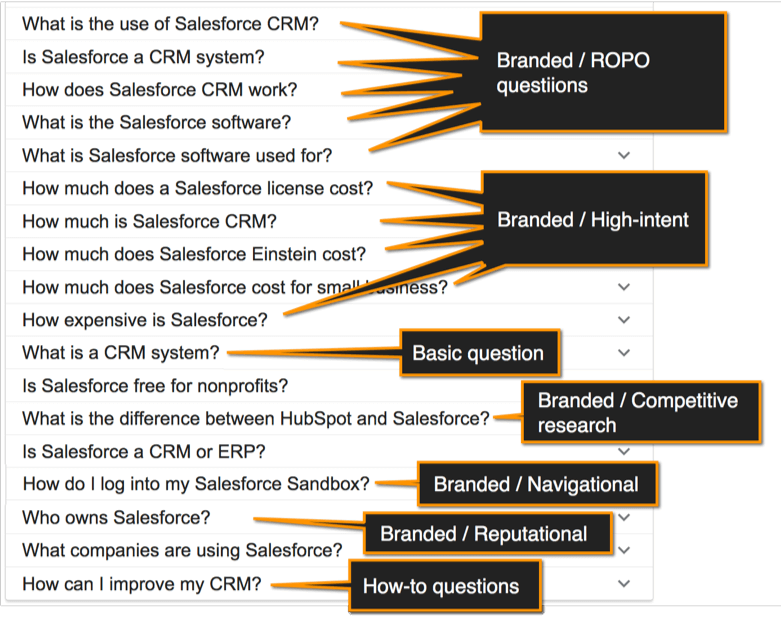
Providing this information to your competitors allows you to develop a better product and site than theirs.
As search algorithms change over time, search elements are dropped and added, and Google’s search results have evolved, staying on top of digital marketing trends may seem almost impossible.
In many ways, however, not much has changed and the core of our work remains pretty much the same. Some of those changes have actually made it easier than ever for you to get noticed on the web. There is still some competitive advantage in each change, regardless of whether we welcome or dislike it.